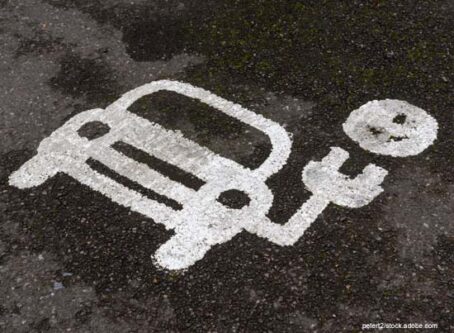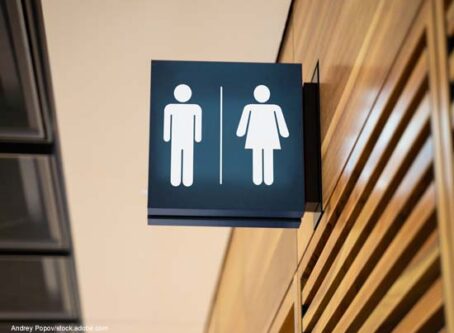‘Citizen voices’ cited in road costs rising threefold, study shows
Rising incomes and the increase in citizen participation in projects are two major factors in a threefold increase in interstate construction costs over the decades, according to a recent study.
Recently, the Brookings Institution released a research paper titled “Infrastructure Costs.” The study looked into an aspect of infrastructure funding that has received little attention: the cost of infrastructure spending per unit over time.
According to the Brookings paper, spending per mile on interstate construction increased more than threefold from the 1960s to the 1980s, with a calculated point of increase beginning in the early 1970s. By 1990, the cost of interstate spending for the federal government increased from $8 million per mile to approximately $25 million per mile when compared to the 1960s.
The possible explanation for this increase: rising incomes and “citizen voices.”
Increased ‘citizen voice’
Believe it or not, social movements, legislation and judicial doctrine of the 1960s and 1970s could explain the increase in interstate construction costs. More specifically, the research paper suggests the environmental movement, the civil rights movement and the increase in homeowner power influenced increased spending.
The Brookings Institute calls this influence “citizen voice.”
In 1971, the Supreme Court of the United States’ ruling in Citizens to Protect Overton Park v. Volpe established judicial review of the actions of administrative agencies. More importantly, the case highlighted how powerful grassroots citizen groups can be in regards to blocking government action.
One year before that decision, Congress passed the National Environmental Policy Act. Still controversial today, the act requires environmental impact reviews for projects with significant federal funding. Many in Washington today, including President Donald Trump, want to roll back such regulations, claiming they are too costly.
Other pieces of legislation that affected construction costs include the National Historic Preservation Act of 1966, the 1973 Endangered Species Act and the 1972 Clean Water Act. These acts make it more difficult to approve projects on public land.
The Brookings Institute suggests a few reasons why citizen voices contributed to higher construction costs. First, it points to the cost of environmental reviews, including costly litigation. Environmental reviews also can lead to expensive rerouting or methods of construction.
“We view this as the most likely mechanism of increased spending: citizen voice leads to more expensive routes and structures to respond to local concerns,” the researchers state in the paper.
Higher incomes leads to higher demand for interstate highways
According to the paper, total personal income per capita doubled between 1956 and 1993. How does this translate to higher construction costs?
Essentially, it comes down to power. The Brookings Institute states that higher-income actors may demand more expensive highways. To start, wealthier individuals tend to have stronger voices in politics, including processes to demand more expensive highways that reflect their concerns. Second, “demand for most goods increases with income or wealth,” according to the report.
More specifically, highway features that respond to local citizen concerns are likely to be more expensive. With more people achieving higher levels of wealth, more locals have the political power through money to get the projects they want compared to previous decades. These more expensive projects may include sound walls, overpasses with parks or built in trenches to reduce noise. When communities had less money, and therefore less political clout, these desires could easily be ignored.
In terms of quantifying that theory, researchers found that a $10,000 increase in state-level median family income is associated with a cost increase of $5 million per mile. As the paper notes, this is consistent with previous research that shows a positive correlation between higher demand for air/water quality and higher income.
The same holds true for house values. Many homeowners may be concerned about nearby interstate projects devaluing their property value. Data shows that a $28,222 increase in home values is related to a $6.34 million increase in interstate spending per mile.
Debunked explanations
The Brookings Institution discovered several popular hypotheses that attempt to explain the increase costs of interstate construction that were not supported by its research data.
One theory states that more difficult projects were saved for last. If true, it would explain an increase in costs over time. However, data suggests that difficult segments were built early on in the building phases of the interstates.
Others have blamed common law. More specifically, common law protections that allow individuals to slow development through lawsuits and other legal challenges. Considering common law never changed throughout the studied years, it is unlikely it contributed to the cost increase. It could explain costs when compared to other countries, but fails to explain costs within the scope of the study.
A more common theory posits that increases in labor and/or materials prices led to the rise of interstate construction costs. In short, researchers found labor and materials prices were mostly stagnant. Even when accounting for increases in construction compensation and the use of overtime, those factors could only explain a fraction of the overall interstate construction costs per mile.
Lastly, changes in federal interstate standards may have caused the increase in construction costs. However, data revealed no large changes in federal interstate construction standards that would lead to increased spending per mile.









